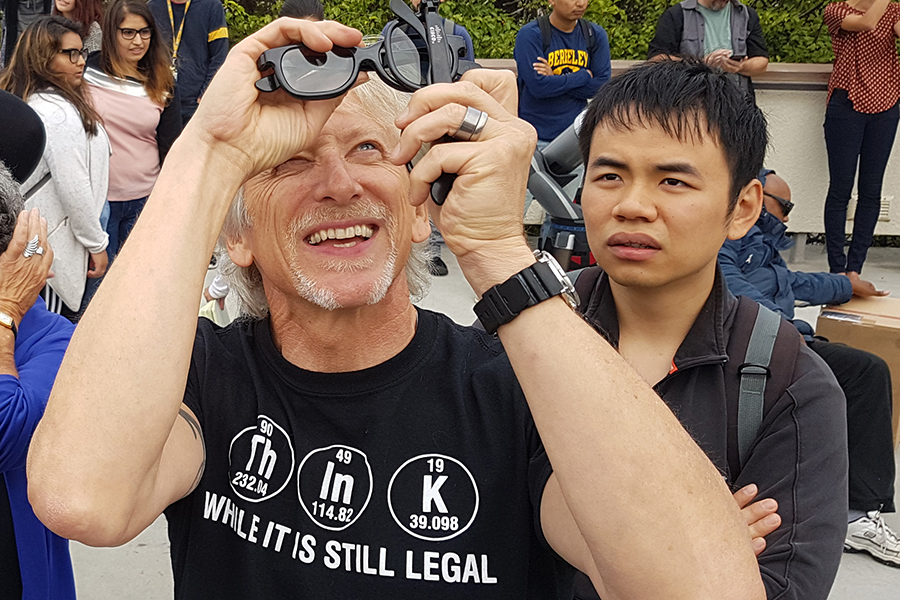Solar eclipse draws heads toward the sky
Astronomy professor Jon Celesia looks at Monday’s eclipse through double Polaroid glasses on the roof of the Physical Building.
Aug 23, 2017
Heads were tilted upward and phones were pointed toward the sky to catch a glimpse of the total solar eclipse making its way across the sky on Monday.
From the roof of the Physical Science Building at 10:15 a.m., Contra Costa College students gathered for the total solar eclipse viewing party, but were able to only see a part of the much anticipated event.
Astronomy professor John Celesia said, “We are viewing a partial solar eclipse with our naked eye.”
A partial solar eclipse is when the moon covers only part of the sun, Celesia said.
Two to five solar eclipses can occur throughout the year and can be viewed throughout the United States.
Celesia said a total solar eclipse happens when the Moon is on its first phase, which is known as the ‘new moon’ phase.
Throughout the United States from West to East, at the precise moment and for just a few minutes, the Moon passes between the sun and the earth causing a total solar eclipse.
“They (solar eclipses) happen during the daytime and last about an hour and a half going in and an hour and a half going out,” Celesia said.
But the moment the moon completely aligns with the sun lasts only about three minutes.
Due to the overcast weather in the Bay Area, it was possible for curious students throughout the Contra Costa College campus to see the partial eclipse through the cloudy, gray sky.
Also, the California sky was out of the path of totality, the area in which the eclipse can be seen in its entirety. States from Oregon to South Carolina.
Middle College High School student Eduardo Huizar said, “I thought (the solar eclipse) was mediocre. It was probably just because of the weather though. It was too cloudy.”
Gateway to College student Miguel Duran said he was watching the solar eclipse with his friends for the fun, but the overcast ruined the experience for him.
Despite the gray clouds, Celesia said, “Sometimes when it seems like things aren’t going well, things turn out even better.”
Students were also gathered outside of the Applied Arts Building and near the Library with paper glasses and makeshift paper devices to view the solar eclipse.
A concern for those viewing the solar eclipse is going blind from staring directly into the eclipse without protecting their eyes with solar filters — or solar glasses.
Celesia said often times some people wear glasses to protect their eyesight, but the cloudy sky allowed for a clearer view.
“We get to look at it directly with our eyes. It’s crazy,” he said.
Celesia said the sun is 400 times wider than the moon and 400 times farther from earth, that is why they look the same size from Earth.
“I thought it was beautiful,” chemical engineering major Aide Guzman said.
Guzman said she heard from friends that people viewing the solar eclipse from Oregon would have a better chance of seeing more of the celestial event.
At 10:23 a.m., Celesia received a notification saying that Oregon reached a 99.3 percent solar eclipse totality (when the sun is completely covered by the moon).
The next total solar eclipse is scheduled to happen on July 2019 through Chile and Argentina, according to NASA’s eclipse2017 website.



